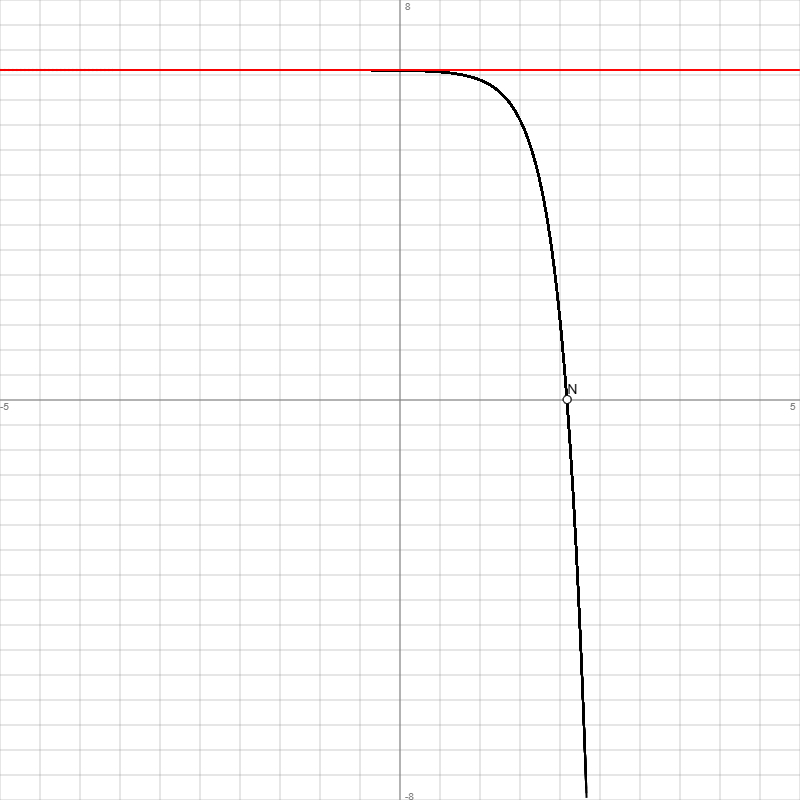
www.michael-buhlmann.de
Funktion: f(x) = 6.6-0.2-2x+3, Df = R, Wf = (-∞; 6.6), reelle Funktion, x -> -∞: f(x) -> 6.6 = y als Grenzkurve, x -> +∞: f(x) -> -∞ ->
| Wertetabelle: | |||||
| x | f(x) | f'(x) | f''(x) | f'''(x) | Besondere Kurvenpunkte |
| -5 | 6.6 | 0 | 0 | 0 | |
| -4.5 | 6.6 | 0 | 0 | 0 | |
| -4 | 6.6 | 0 | 0 | 0 | |
| -3.5 | 6.6 | 0 | 0 | 0 | |
| -3 | 6.6 | 0 | 0 | 0 | |
| -2.5 | 6.6 | 0 | 0 | 0 | |
| -2 | 6.6 | 0 | 0 | 0 | |
| -1.5 | 6.5999 | 0 | 0 | 0 | |
| -1 | 6.5997 | 0 | 0 | -0.01 | |
| -0.5 | 6.5984 | -0.01 | -0.02 | -0.05 | |
| 0 | 6.592 | -0.03 | -0.08 | -0.27 | Schnittpunkt Sy(0|6.59) |
| 0.5 | 6.56 | -0.13 | -0.41 | -1.34 | |
| 1 | 6.4 | -0.64 | -2.07 | -6.69 | |
| 1.5 | 5.6 | -3.22 | -10.36 | -33.46 | |
| 2 | 1.6 | -16.09 | -51.81 | -167.29 | |
| 2.086 | 0 | -21.23 | -68.33 | -220.65 | Nullstelle N(2.09|0) |
| 2.5 | -18.4 | -80.47 | -259.03 | -836.47 | |
| 3 | -118.4 | -402.36 | -1295.15 | -4182.37 | |
| 3.5 | -618.4 | -2011.81 | -6475.75 | -20911.87 | |
| 4 | -3118.4 | -10059.06 | -32378.74 | -104559.35 | |
| 4.5 | -15618.4 | -50295.28 | -161893.71 | -522796.76 | |
| 5 | -78118.4 | -251476.41 | -809468.54 | -2613983.82 | |
| Graph: | |||||
 | |||||
Abkürzungen: Df = (maximaler) Definitionsbereich, f(x) = Funktion, f'(x) = 1. Ableitung, f''(x) = 2. Ableitung, f'''(x) = 3. Ableitung, H = Hochpunkt, L = Lücke, N = Nullstelle, P = Polstelle, R = reelle Zahlen, S = Sprungstelle, T = Tiefpunkt, W = Wendepunkt, WS = Sattelpunkt, Wf = Wertebereich, {.} = ein-/mehrelementige Menge, [.; .] = abgeschlossenes Intervall, (.; .) = offenes Intervall, [.; .), (.; .] = halboffenes Intervall, ∞ = unendlich.
Bearbeiter: Michael Buhlmann